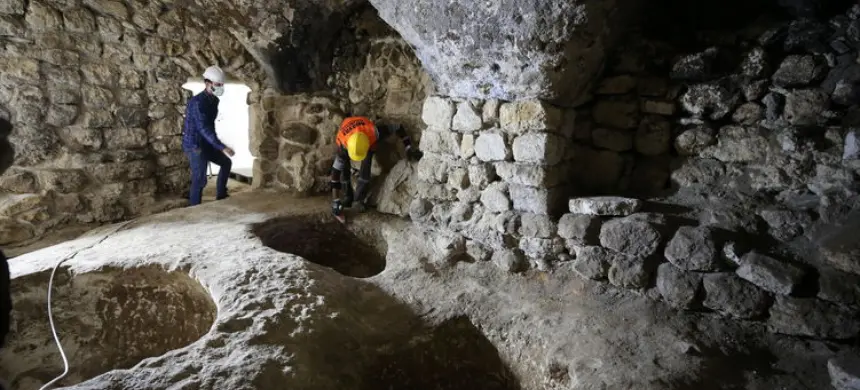In the southwest of Turkey’s Mardin province lies the world’s oldest and largest underground city, recently named “Madit” by modern historians. The discovery occurred when a man searching for his chickens stumbled upon a hidden door behind a wall in his house, which led to an extensive tunnel system. Archaeologists began excavating Madit in 2020 and have uncovered a network of tunnels and over 50 rooms, with the longest tunnel measuring 120 meters. The city’s intricate design includes grain and food storage areas, wells, kitchens with smoke exhaust systems, places of worship, sacrificial sites, and facilities for animals.
Experts estimate that Madit once accommodated around 70,000 people. Despite the extensive excavation, a significant portion of the city remains unexplored, with much of it located about 280 feet below the surface. The city is believed to date back to around 900 BC and covers approximately 900,000 square meters, though only a small fraction has been excavated. Excavation director Marwan Yavez speculates that the city’s subterranean nature provided shelter from harsh weather or protection from enemies. The narrow, rocky entrance supports the theory that it served as a defensive refuge.
Read more: 106-Year-Old Man Achieves Title Of Oldest Skydiver
Madit is thought to date back to the reign of Ashurnaserpal II (883-859 BC), whose empire spanned from the Gulf to Egypt. The region, part of ancient Mesopotamia, is one of the world’s earliest civilizations, with a history involving various kingdoms including those of the Arabs, Romans, and Byzantines.
Historian Ikram Akman suggests that the caves might have served as sanctuaries during the spread of Judaism and Christianity, protecting people from persecution. The city is believed to have been occupied for about 2,000 years, with the last inhabitants leaving around 1920. Madit is the largest and most significant among approximately 40 other similar underground cities in the area, highlighting its historical and archaeological importance.











